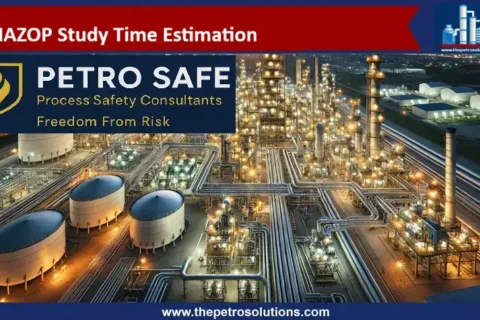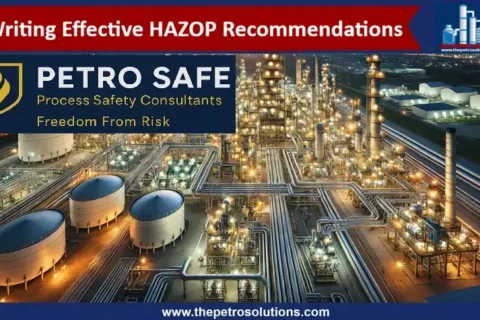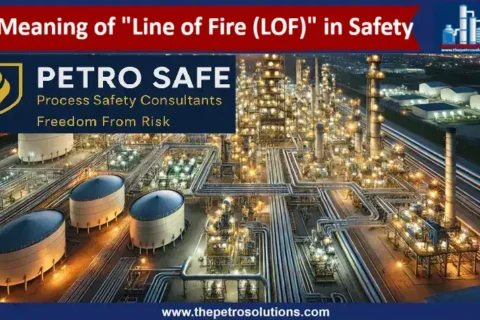Ebullated bed reactor (EBR) in oil refineries is a type of fluidized bed reactor that utilizes ebullition, or bubbling, to achieve appropriate mixing of reactants and catalysts for residue hydroprocessing. The ebullated-bed technology utilizes a three-phase reactor (liquid, vapor, and catalyst) in which the recycle gas bubbles up through the hydrocarbon mixture and the catalyst particles, creating a turbulent suspension. Ebullated bed reactors offer high-quality, continuous mixing of process fluids and catalyst particles. Owing to the decline in heavy fuel oil demand, it is necessary for petroleum refiners to process heavier crudes that require deep residual conversions to produce clean, high-quality finished products using ebullated bed, slurry technology, or RFCC (Residue Fluid Catalytic Cracking) process.
Applications of Ebullated Bed Reactors (EBR)
The ebullated bed reactors are applicable to various refinery feeds such as atmospheric residues (ARs), vacuum residues (VRs), heavy deasphalted oils (DAOs), straight-run vacuum gas oils (VGOs), heavy coker gas oil (HCGO), or coal-derived oils such as coal slurries (Direct Coal Liquefaction, DCL), as well as Pyrolysis Oil (Pyoil) from steam crackers, coal liquids, asphalt, bitumen from tar sands, and shale oil. Although ebullated-bed processes are generally used for the conversion of heavier vacuum residue feedstocks, they can also be used to clean or treat a lower boiling point vacuum gas oil feedstock.
Advantages of Ebulated Bed Reactor
The ebullated bed hydroconversion is suitable for deep conversion of heavy feedstocks and has advantages over fixed bed hydrocracking.
- A good back-mixing of the catalyst with process fluids gives excellent temperature control and isothermal operation with no quench gas requirement. Isothermal operation increases product selectivity, improves heat transfer, and minimizes the risk of local overheating, and coke yield. Therefore, ebullated-bed reactors have the unique characteristic of stirred reactor-type operation with a fluidized catalyst. This results in the ability to handle exothermic reactions, solid-containing feedstock, and a flexible operation.
- The ebullated bed allows free movement of solids, which minimizes fouling, bed plugging, and channeling. The particle size is not restricted by pressure drop, and therefore smaller particles can be employed, reducing diffusional limitations significantly and making the catalyst less susceptible to pore mouth plugging by metal deposits.
- The ebullated bed can process heavy, high metals, high CCR, and asphaltene-containing feeds, as well as feeds containing high levels of finely dispersed solids, without risk of pressure drop build-up.
- Catalyst is regularly added and withdrawn while the reactor is in operation, this feature maintains the consistent product quality over a longer period of time. The rate of catalyst addition can be adjusted to maintain desired product quality objectives in response to changes in feedstock characteristics.
- EBRS don’t require shutdown for removal of the catalyst due to high differential pressure or activity loss, hence longer life cycles of the reactor as compared to the fixed bed reactor.
- The EBR operation can also be adjusted for different feedstocks and the type of catalyst can also be changed without shutting down the reactor.
- Flexible operation with conversion up to 90 vol% with products having low levels of sulfur, metals, and nitrogen.
- This process does not require pre-treatment of feedstocks and hence no need for front-end HDM (Hydro demetallation) catalysts.
Disadvantages of Ebulated Bed Reactor
- Ebulated Bed reactor requires a larger volume as compared to Fluidized Bead Reactor due to their small ratio of catalysts per liquid volume.
- If the catalyst bed slumps or settles in the reactor then local hot spots can develop swiftly. Coke deposition then occurs rapidly because of the hydrogen deficiency in these zones.
- Ebulated Bed reactor suffer from excessive catalyst consumption which gives high operational costs. The back-mixed character of EBRs is kinetically less favorable compared with the fixed bed plug flow reactor.
- The catalyst must have improved mechanical strength because replacement conditions in an EBR promote serious attrition and erosion of the catalyst particles.
- Sediment formation is a major concern as a result of the high conversion levels (>50 vol%). Higher conversions are limited by the formation of solids in the product lines, particularly in the residue product of the process.
- Even though the catalysts in the ebullated bed processes give some removal of sulfur and nitrogen, the resulting oil product may still require secondary hydrotreating to reduce the heteroatom content to the levels of desired specifications.
- In order to achieve conversions as high as 95%, the unconverted residue must be recycled. This recycled material is less reactive than the fresh feed, and hence a larger reactor capacity is required than in single-pass operation. Further, the liquid recycle stream must be treated to remove the fraction of the residue which leads to the formation of solids in the products.
- The catalysts used for processing residues inevitably deactivate with time due to the accumulation of nickel and vanadium sulfides, and the accumulation of coke.
Process Description of Ebulated Reactor Unit
Fresh feed and hydrogen after heating separately combine and enter the reactor at the bottom and pass up through a distributor and grid plate to a catalyst bed where hydrodesulfurization and other cracking and hydrogenation reactions take place. A portion of the liquid product from the large pan at the top of the reactor is recycled through the central downcomer by means of a pump mounted at the bottom of the reactor. This ebullating pump gives the needed velocity for bed expansion up to 40% as compared to the settled catalyst bed and maintains isothermal reactor temperature.

The performance of the ebullated bed process is continuously monitored and controlled by level with the density detectors and temperature measurements that verify the proper distribution of gas and liquid throughout the catalyst bed. Temperature deviations outside the normal expected ranges might be because of maldistribution.
A separate system is designed along with other plant layouts to handle the fresh and spent catalysts for the EBR. Fresh catalyst is supplied through the top of the reactor and the spent catalyst is removed from the bottom. The reactors can be staged in series, where the product from the first reactor passes to a second reactor.
The first reactor outlet is passed through a reactor effluent separator called an inter reactor separator where vapors are separated and the liquid is sent to the downstream reactor. Fresh high-purity hydrogen gas is injected with the liquid feed into the downstream reactor to satisfy the hydrogen partial pressure requirements in this reactor consistent with the chemical hydrogen consumption.
Reactor products from the top of the reactor flow to the high-pressure/high-temperature separator where gases and liquid are separated. Further, gases are separated in a Medium or Low-Pressure separator. Gases are purified through PSA (Pressure Swing Adsorption) or membrane technology, recycled, and injected with makeup gas in addition to the reactor. While net liquid from the separator goes to the fractionation tower and is separated into lighter petroleum products.

The two most important reactions that take place in residual hydrocracking are thermal cracking to lighter products and catalytic removal of feed contaminants. Nitrogen removal is generally much more difficult than sulfur removal. Some nitrogen compounds in the cracking reactions are merely converted to lower-boiling-range nitrogen compounds rather than being converted to NH3.
The ebullated bed reactor can also be integrated with a fixed bed hydrotreating reactor to treat the distillate and with Delayed Coker and SDA (Solvent Deasphalting) to increase the conversion of residue.
Metals Removal
The highest concentration of metals (V and Ni) resides in the asphaltene fraction with some in the resin fraction. The oil fraction tends to be nearly free of metals. Metals are removed as metal sulfides. Unlike sulfur and nitrogen, which are converted and removed as H2S and NH3, the vanadium and nickel removed are absorbed into the catalyst. These metals are known to plug the catalyst pores and this pore blockage results in catalyst deactivation.
Catalysts for Ebullated Hydroprocessing
The residual hydroprocessing catalysts are small typically 0.8 mm in diameter, extruded, cylindrical pellets made from an aluminum base. The pellets are impregnated with active metals (Co, Ni, Mo, W, and other proprietary materials) that have good hydrogenation, demetallation, desulfurization, and sediment control activity.
Commercial Process of Ebulated Bed Reactor
Two similar licensed processes of this type are available: the H-Oil process licensed by Axens and the LC-fining process licensed by Chevron Lummus. Differences between the two technologies are mainly in the details of equipment design. Both technologies have very similar characteristics in terms of process parameters and reactor design, but they differ in some mechanical details.
For further information, discussion and queries please comment in the box below or contact us at admin@ or follow us on Facebook & LinkedIn.
Certified Functional Safety Professional (FSP, TÜV SÜD), Certified HAZOP & PHA Leader, LOPA Practitioner, and Specialist in SIL Verification & Functional Safety Lifecycle, with 18 years of professional experience in Plant Operations and Process Safety across Petroleum Refining and Fertilizer Complexes.
- Nasir Hussain
- Nasir Hussain
- Nasir Hussain
- Nasir Hussain
- Nasir Hussain
- Nasir Hussain






